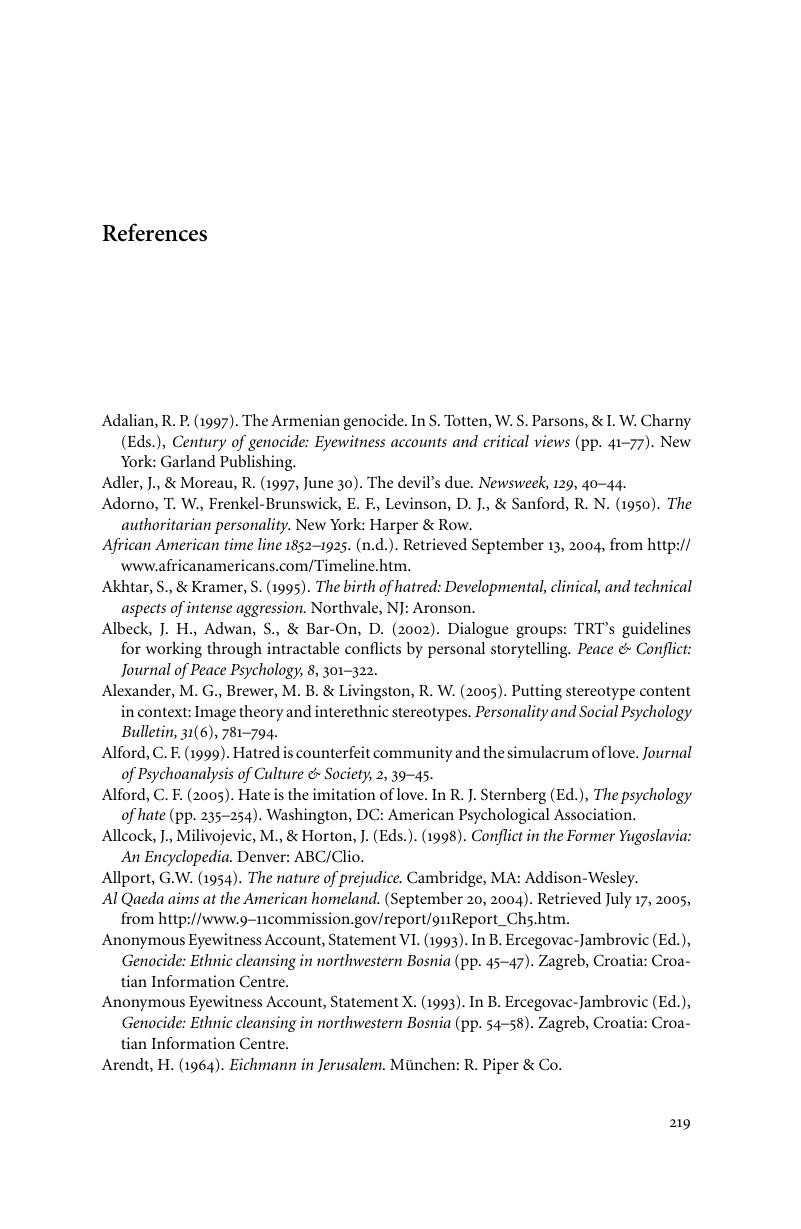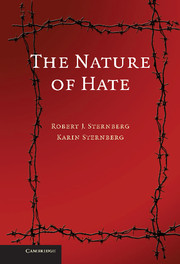Book contents
- Frontmatter
- Contents
- Preface
- 1 The Problem: The Role of Hate in the World
- 2 Definitions and Theories of Hate
- 3 The Duplex Theory of Hate I: The Triangular Theory of the Structure of Hate
- 4 The Duplex Theory of Hate II: A Story-Based Theory of the Development of Hate
- 5 Interpersonal Relationships – Love–Hate
- 6 The Role of Propaganda in Instigating Hate
- 7 Application of the Duplex Theory of Hate to Massacres, Genocide, and Terrorism
- 8 Are There Any Cures for Hate?
- Appendix: Triangular Hate Scale
- References
- Author Index
- Subject Index
- Figure Credits
- References
References
Published online by Cambridge University Press: 05 June 2012
- Frontmatter
- Contents
- Preface
- 1 The Problem: The Role of Hate in the World
- 2 Definitions and Theories of Hate
- 3 The Duplex Theory of Hate I: The Triangular Theory of the Structure of Hate
- 4 The Duplex Theory of Hate II: A Story-Based Theory of the Development of Hate
- 5 Interpersonal Relationships – Love–Hate
- 6 The Role of Propaganda in Instigating Hate
- 7 Application of the Duplex Theory of Hate to Massacres, Genocide, and Terrorism
- 8 Are There Any Cures for Hate?
- Appendix: Triangular Hate Scale
- References
- Author Index
- Subject Index
- Figure Credits
- References
Summary

- Type
- Chapter
- Information
- The Nature of Hate , pp. 219 - 234Publisher: Cambridge University PressPrint publication year: 2008



